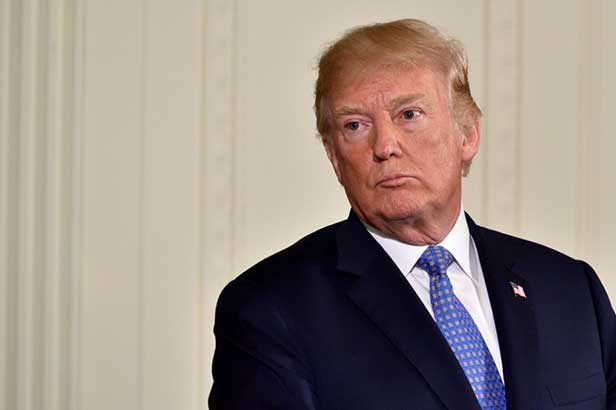November 21, 2019
Trump: ‘I’ll Raise Tariffs Even Higher’
The threat comes as some analysts say a “Phase One” US/China trade deal might not be signed until next year.
Updated: November 21, 2019, 6:28 a.m.
President Donald Trump this week threatened to raise tariffs on Chinese imports if the U.S. and China fail to agree to a new trade deal.
“If we don’t make a deal with China, I’ll just raise the tariffs even higher,” Trump said in a Tuesday meeting with his Cabinet.

A hike in tariffs would likely cause additional repercussions for the domestic promotional products industry, which imports the vast majority of items sold stateside from China.
The tariffs of 15% and 25% that Trump has placed on hundreds of billions of Chinese imports during the approximately two-year-long trade conflict have affected ad specialty staples that range from apparel like T-shirts to drinkware, writing instruments, headwear, tech accessories and more. One result has been product price increases in promo, with more ahead if tariffs remain in place or increase, as suppliers restock with items brought in under the levies.
The likelihood of the world’s two largest national economies soon signing a preliminary trade agreement that would set the stage for a more expansive deal – what Trump called “Phase One” in October – appears to have diminished in recent days, according to some reports.
Citing trade experts, Reuters reported that the so-called “Phase One” deal might not be inked until an undefined time in 2020. Furthermore, any trade deal could be placed in greater jeopardy by Trump's support of a Congress-backed bill that expresses support for Hong Kong protesters. In October, Trump said the deal was effectively done but for hashing out particulars. Expectations were, initially, that it would be signed in November.
The impasse centers on tariffs. China wants a rollback on existing U.S. tariffs and a commitment that Trump will not institute additional duties of 15% on what press reports now say is approximately $156 billion in additional China-made consumer goods on Dec. 15.
For its part, the U.S. side has been loath to scale down levies unless China offers deeper concessions on issues the Trump administration has emphasized in the trade war, including improved access to China’s financial services industry, enforceable intellectual property protection for foreign companies doing business in China, and a commitment from Beijing to buy tens of billions in U.S agricultural products over a set time period.
Should China and the U.S. find common ground on such major issues, the “Phase One” deal would actually surpass its original intended scope, pushing closer to a more comprehensive – if not complete – agreement. A Bloomberg report indicated that all is possibly not at a stalemate between negotiators. The report said the U.S./China near-deal that crumbled at the 11th hour during the spring of 2019 is being used as a possible benchmark to decide how much tariffs could possibly be drawn back during a potential “Phase One” deal. Whether anything will come of the exercise remains to be seen.
Meanwhile, China’s Commerce Ministry characterized weekend phone discussions between top trade negotiators as “constructive,” while White House economic advisor Larry Kudlow has said the sides are “getting close” to a deal. Such characterizations have been made at various instances during the trade war. No deal followed.
“The Trump administration is genuinely hopeful that they’ll get a ‘Phase One’ deal done, and the Chinese are hopeful that they can get a rollback on tariffs, but I’m deeply skeptical that the Chinese will agree to anything with any teeth to it,” Joshua White, general counsel and senior vice president of strategic partnerships at Top 40 distributor BAMKO (asi/131431), told Counselor. Based in Los Angeles with a global reach, BAMKO has operations in Asia, the Americas and beyond. “There are many hurdles that need to be cleared,” White continued. “The more I dig into this subject, the more convinced I am that things are not going to go well.”
Please visit Counselor’s online destination for trade war coverage to get a comprehensive view of the conflict’s impact on the promo products industry.
